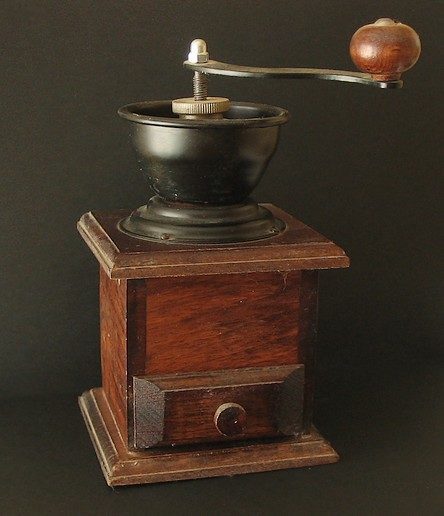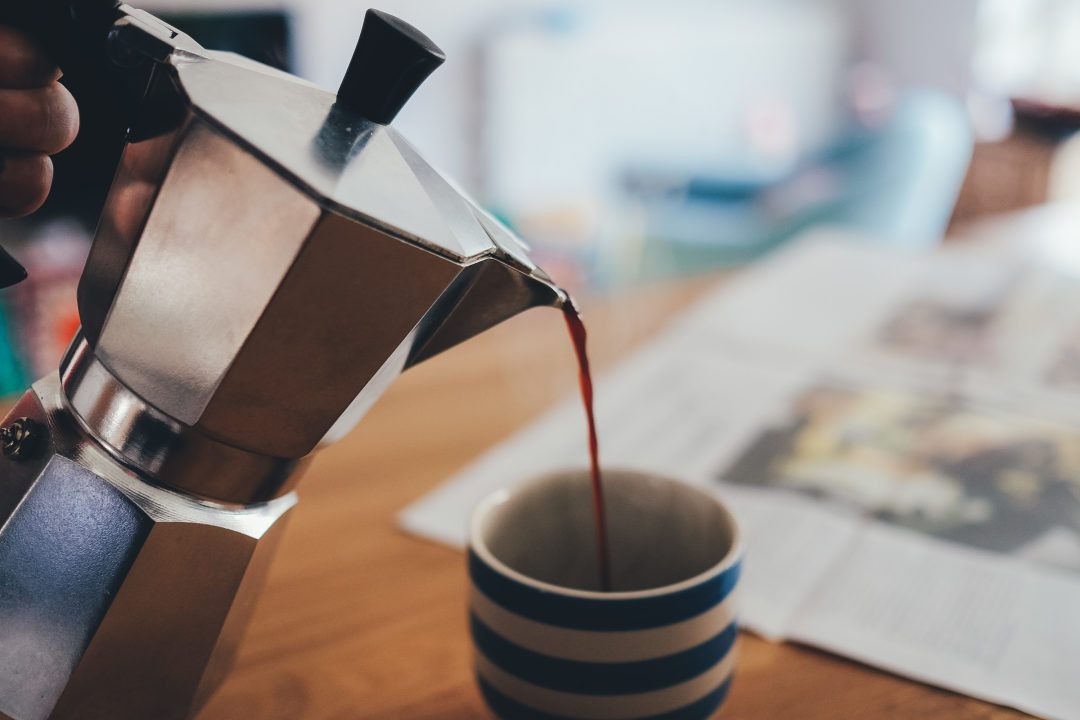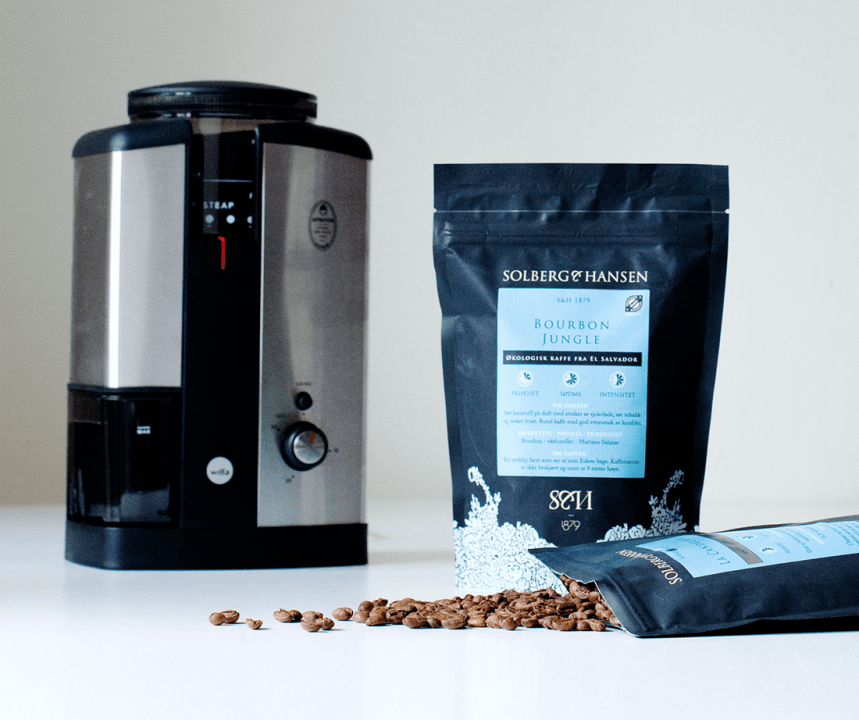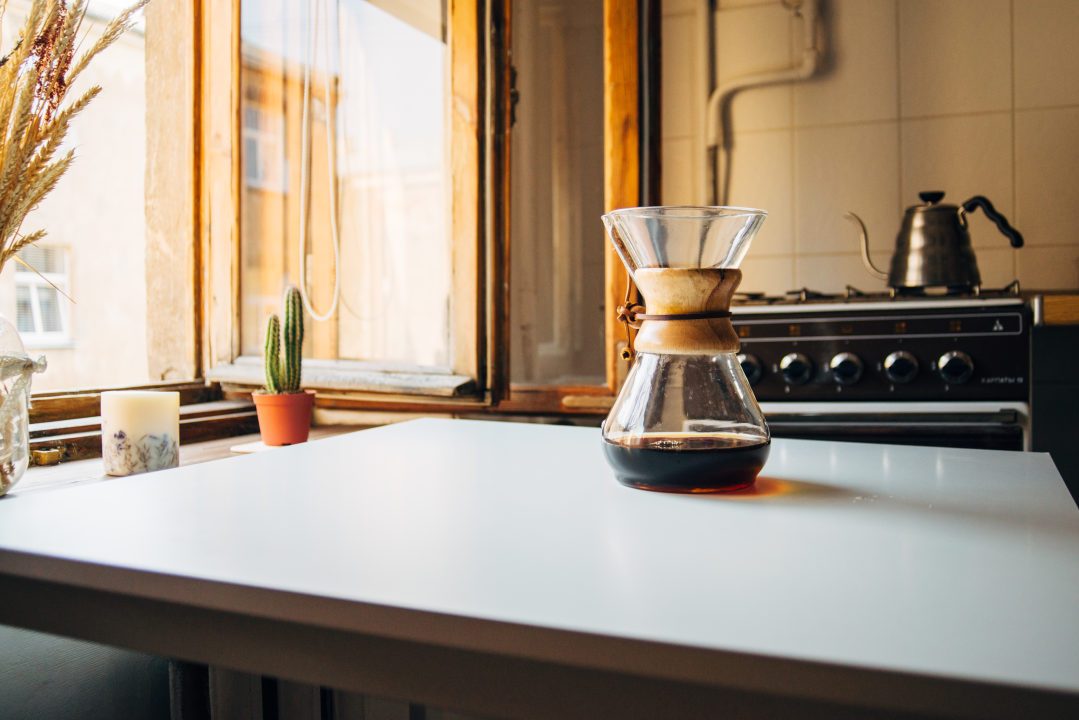In a freshly roasted coffee bean, there are more than a thousand flavors and aromas waiting to be released when it meets hot water. Here you'll find out why the flavors are preserved by grinding the coffee just before brewing, what type of grinder gives the best results and why the choice of grinding degree is so important. At the bottom, we also offer a clever tip on how to clean a coffee grinder without using advanced cleaning agents.

But first, a little about the history of the coffee grinder:
Before the days of the grinder, coffee was prepared by boiling whole coffee beans for so long that flavor and caffeine were eventually extracted. The result was of a completely different color than black gold, rather a thin and bitter brew with high caffeine levels. It was not until the 13th century that coffee beans began to be crushed in small stone mills when coffee was introduced in Arabia. A few hundred years later, in the 15th century, cylindrical coffee mills were invented in Turkey. The predecessor to the classic tabletop model with a tray (as pictured, photo: Mohylek) saw the light of day in the 18th century, while the first electric coffee grinder was produced in 1879 by the Hobart Manufacturing Company of Troy, Ohio, USA.
Three good reasons to get a coffee grinder
Flexibility: By keeping a coffee grinder on your kitchen counter, you'll be able to brew all types of coffee - press pot, funnel coffee, hand brew and mocha brew - from the same bag of coffee beans. Because different brewing methods have different contact times with hot water, the degree of grind is used to adjust how much flavor is extracted from the coffee bean. Read more about this in our grinder guide further down this page.
Flavor: A large proportion of coffee's more than 1,000 aroma and flavor components are released when they react with oxygen (oxidation). As a result, the coffee has lost around 60% of its aroma compounds 15 minutes after the coffee beans have been ground.
Preference: While there are a number of guides to help you choose the right grind for different brewing methods, it's your own taste that matters most when it comes to drinking your coffee. With a coffee grinder, you can influence the intensity of the coffee's flavor by fine-tuning the degree of grinding to your own preferences. We explain more about how you can influence the flavor with a coffee grinder in the grinder guide below.

What type of grinder should I choose?

The quality of coffee grinders can be easily distinguished by looking at how evenly they grind the coffee beans. This is very important in order to brew good coffee with a predictable taste. The cheapest grinders on the market have simple, rotating blades that simply cut up the coffee beans, giving a very uneven result. A good coffee grinder must be built with a grinding mechanism consisting of rotating grinding surfaces that grind the coffee beans evenly and stably. A popular home grinder, which has become known for good quality at a pleasant price, is the Wilfa Nymalt. This grinds coffee for most purposes within the four walls of the kitchen. If you're the discerning type, or want a grinder to operate an advanced espresso machine, you may want to look at options in slightly higher price ranges. But for most people, Wilfa's coffee grinder does the job and then some.
Grinder guide: How should coffee be ground?
The coffee grinder is in the house, a bag of whole coffee beans has been purchased - what's next? Before we break it down to grinding and brewing methods, we can start with some basic theory: the finer the coffee is ground, the larger the contact surface from which the hot water can extract flavor. In practice, this means that the choice of grind affects extraction - i.e. how much flavor is extracted from the coffee. The human palate prefers the taste of coffee when around 20 percent of the soluble components of the coffee have been extracted. This is achieved by adapting the degree of grinding to the brewing method's contact time between coffee and water. At the same time, the amount of coffee has a major impact on the taste, and most people will find it tastes best when the coffee is made with between 60 and 65 grams of coffee per liter of water.
Now on to theory in practice: Before grinding the coffee beans, it's a good idea to weigh out exactly how much you need. Calculate around six grams of coffee per deciliter of water, depending on your equipment and preferences. Then set the grinder according to the brewing method you intend to use and pour the coffee beans into the bean cup. Many grinders, such as Wilfa Svart Aroma, have a range of brewing methods where you set the degree of grinding. You can use this as a starting point before fine-tuning to your own taste. The rule is simply that finer grind levels will extract more flavor from the coffee. For those who want a chopped coffee grinder with an advanced grinder, and would like to grind for espresso, Wilfa Uniform is the right choice.
Degree of grinding for different brewing methods

- Espresso (extra fine grind) is brewed under high pressure with a very short brewing time. This requires an extra fine grind and you may have to go up in quality when buying a grinder to get a good enough result. Wilfa Uniform is an example of such a coffee grinder.
- In the classic mocha pot (fine grind), steam forces the water through a metal filter filled with coffee. This brew time has a slightly longer contact time with water than espresso and requires a fine grind.
- In an aeropress (between fine and medium), the coffee is usually brewed for around a minute before being pressed through a paper filter. The normal grind is somewhere between mocha pot (extra fine) and filter (medium).
- When brewing on filter brewers (medium gr ind) and hand brewers (medium grind) of the "Kalita Wave" or "Chemex" type, water passes evenly through the coffee for anything from two to five minutes, depending on the brewing volume. It is common to use a setting around the middle of the scale, often with a slightly coarser grind for large brews.
- In the press pot (coarse grind), hot water is in constant contact with the coffee for anything from four to six minutes. To limit extraction, the coffee must therefore be coarsely ground. The same applies to boiling coffee, which is usually ground even coarser for the press pot.
Clean the coffee grinder
Now for the boring part; cleaning. Because coffee is an organic material filled with coffee oils, some residue will build up in the grinder over time. This can affect the taste and requires a little effort on a regular basis. Fortunately, it's very simple and all you need is a cup of oatmeal: Set the grinder to its coarsest setting, add the oatmeal and grind through. Next, grind the same oatmeal (now coarsely ground), but this time on the grinder's finest setting. Remove the oatmeal and the grinder is once again ready to grind a far more aromatic raw material: freshly roasted coffee beans. Cleaning the blades and hopper once in a while or using a suitable grinder cleaner will also go a long way.